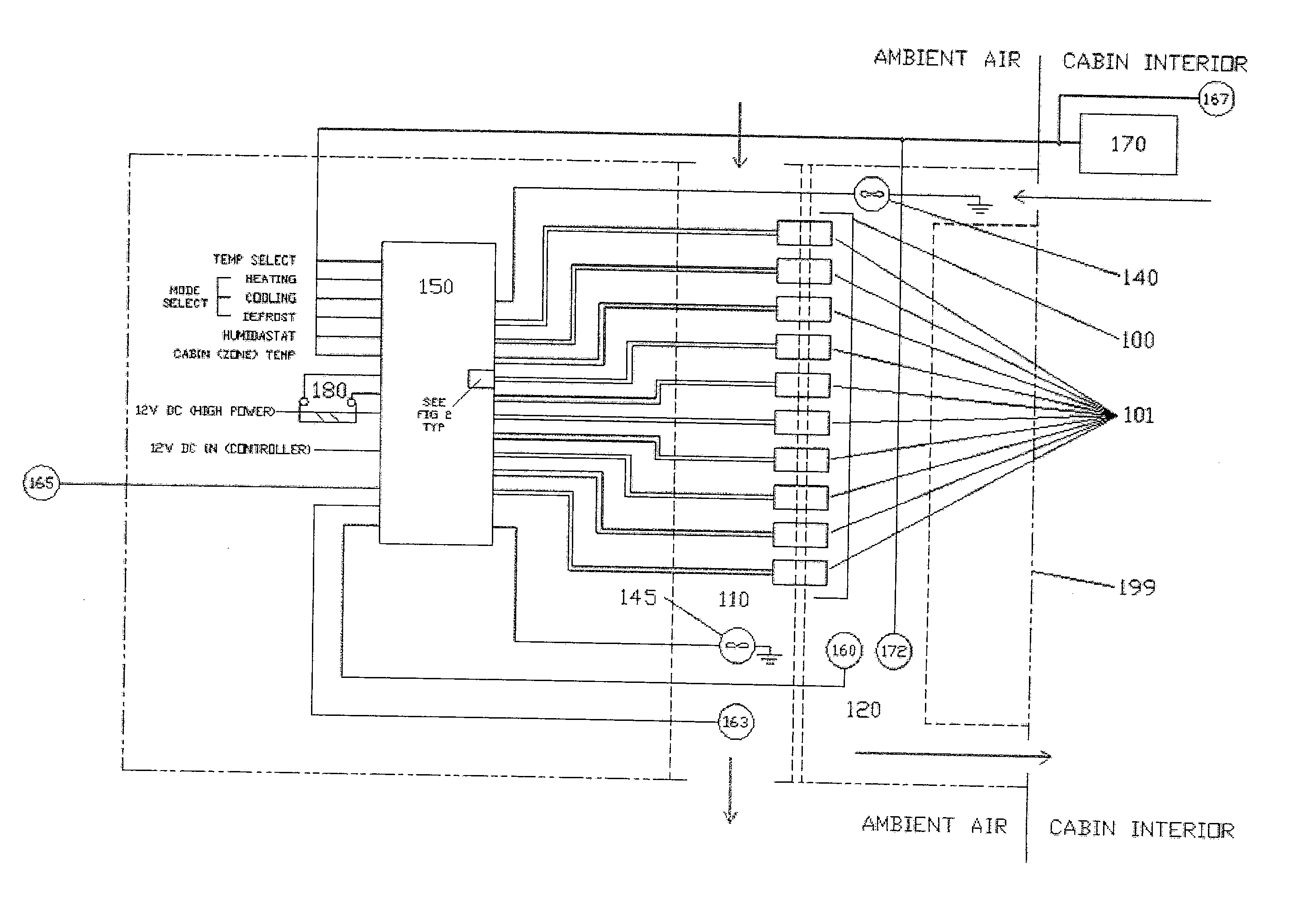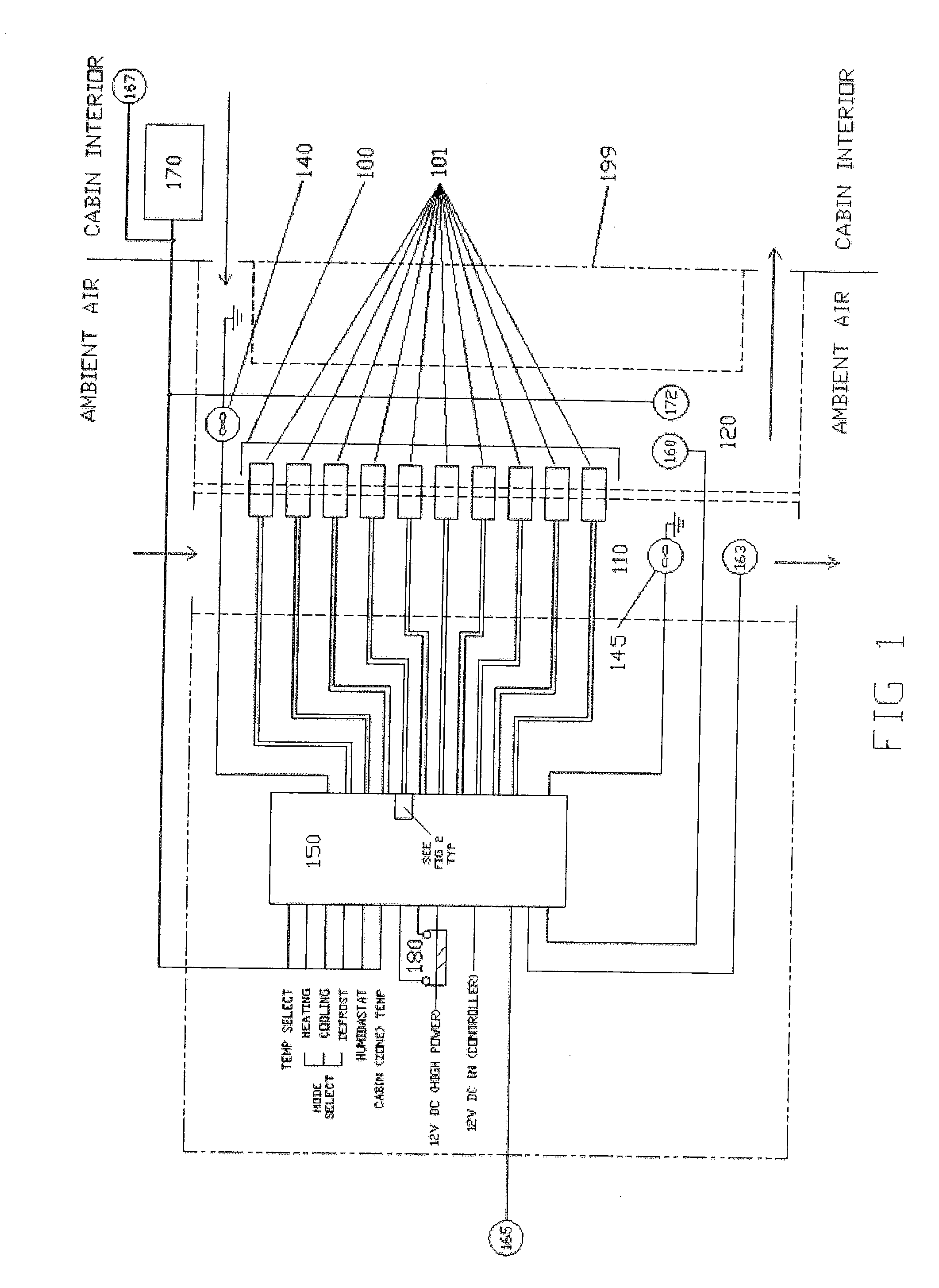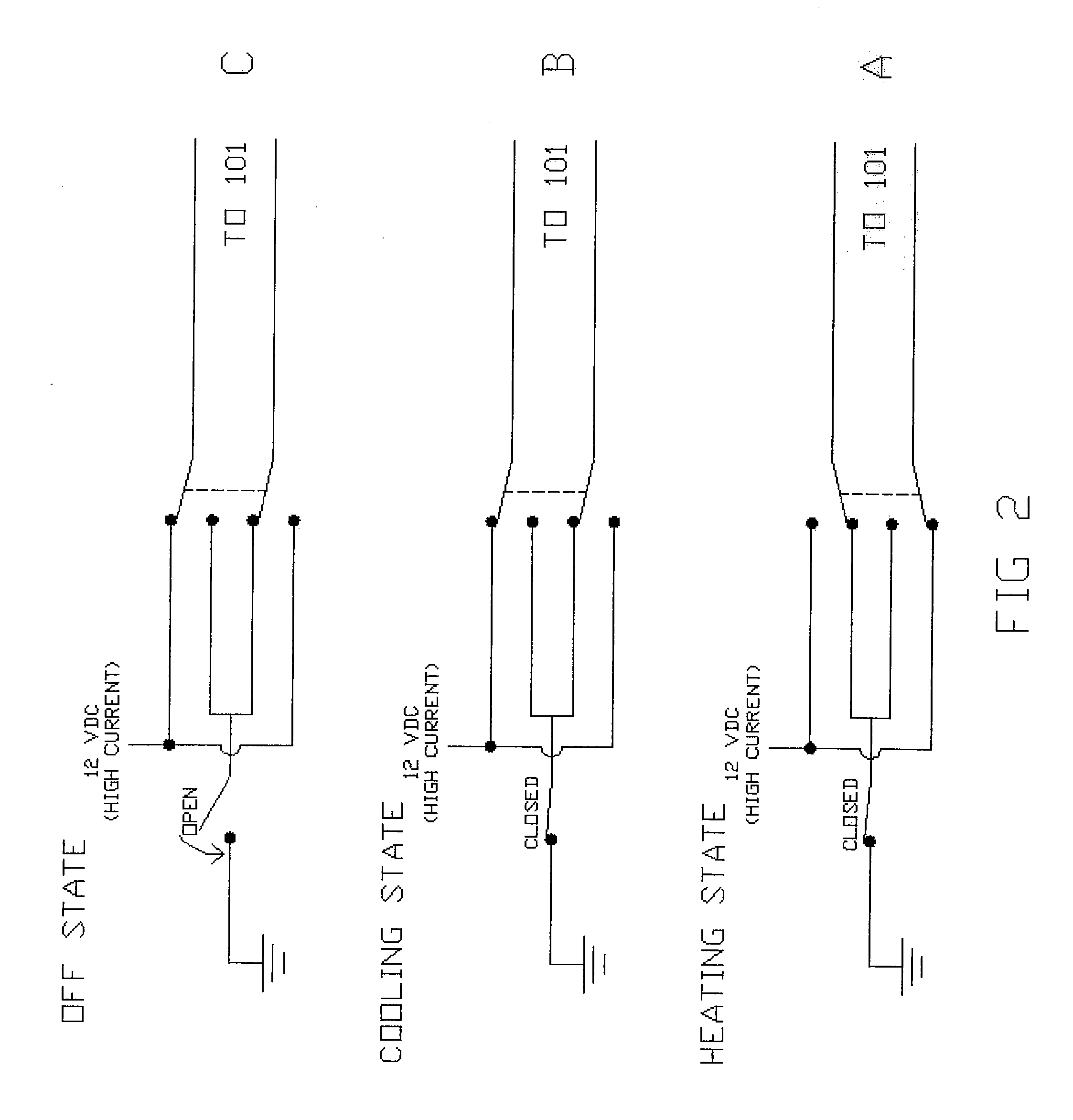Regulating vehicle cabin environment and generating supplemental electrical current from waste heat
a technology for generating supplemental electrical current and regulating the cabin environment, which is applied in the manufacture/treatment of thermoelectric devices, machines/engines, transportation and packaging, etc. it can solve the problems of increasing the power drain on the engine, reducing fuel efficiency, and increasing the power required
- Summary
- Abstract
- Description
- Claims
- Application Information
AI Technical Summary
Benefits of technology
Problems solved by technology
Method used
Image
Examples
Embodiment Construction
[0027] In the following detailed description of the embodiments, reference is made to the accompanying drawings that form a part hereof, and in which are shown by way of illustration, and by way of limitation, specific embodiments in which the invention may be practiced. It is to be understood that other embodiments may be utilized and that logical, mechanical and electrical changes may be made without departing from the spirit and scope of the present invention.
Overview
[0028] The present invention is directed to environmental control and supplementary power generation in conventional and hybrid vehicle applications. Technical considerations are those related to temperature regulation of the interior automobile cabin and supplemental power generated by waste heat from the exhaust. The invention is a system design that uses a thermoelectric heat pump function to regulate vehicular interior temperature environments and also uses the waste heat from a vehicles engine to power thermo...
PUM
 Login to View More
Login to View More Abstract
Description
Claims
Application Information
 Login to View More
Login to View More - R&D
- Intellectual Property
- Life Sciences
- Materials
- Tech Scout
- Unparalleled Data Quality
- Higher Quality Content
- 60% Fewer Hallucinations
Browse by: Latest US Patents, China's latest patents, Technical Efficacy Thesaurus, Application Domain, Technology Topic, Popular Technical Reports.
© 2025 PatSnap. All rights reserved.Legal|Privacy policy|Modern Slavery Act Transparency Statement|Sitemap|About US| Contact US: help@patsnap.com



